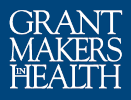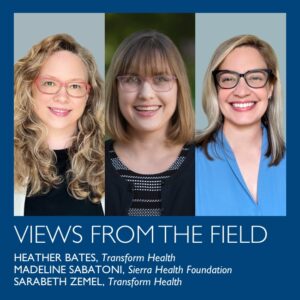Heather Bates, MSW, COO and Vice President of Stakeholder Engagement, Transform Health
Madeline Sabatoni, MPA, Senior Program Officer, Sierra Health Foundation
Sarabeth Zemel, JD, Policy Manager, Transform Health
California has more people enrolled in Medicaid than any other state—almost 15 million of 93 million enrollees nationwide, and the state’s efforts to equitably address the enrollment churn make it worth watching. When the pause on Medicaid redeterminations ended in April, up to 3 million Medi-Cal enrollees, California’s program, were at risk of losing coverage (Galewitz and Hart 2023). Most at risk are those often eligible but inconsistently enrolled in Medi-Cal—if at all. Many of these individuals are from poorly served communities who often experience longstanding discrimination in accessing health care. They commonly live in extremely rural areas and lack access to the internet and transportation; have unstable housing; are reluctant to enroll due to their immigration status; and have limited English proficiency, live with a physical disability, or have behavioral health needs. If Medi-Cal is to be a true driver for health equity, we need to close the enrollment gap in these communities.
Over two years, alongside community, nonprofit The Center at Sierra Health Foundation (The Center) and health policy consulting firm Transform Health partnered with the State of California to develop novel community-driven outreach and enrollment strategies to help the hardest-to-reach communities regain coverage as they churn on and off Medi-Cal. Churning, or moving on and off Medicaid, can result in lower health outcomes and higher administrative costs. What we learned is fueling how we approach the current enrollment gap.
Local Navigators as Powerful Community Messengers
In 2019, California launched the State’s Medi-Cal Health Enrollment Navigator’s Project with $59 million in funding over three fiscal years for counties and community-based organizations (CBOs) to serve hard-to-reach, potentially eligible Medi-Cal populations. In 2020, The Center, among other nonprofit organizations, was contracted to lead this work in counties. The Center worked with four CBOs in northern California to facilitate Medi-Cal enrollment and retention efforts in the counties where county government opted out of the state’s enrollment project: Amador, Calaveras, Lassen, and Solano. Community partners paired with navigators, who are trained individuals or organizations that conduct outreach to people and facilitate Medi-Cal enrollment.
Navigators are critical to enroll hard-to-reach communities into health coverage. For example, in Amador and Calaveras counties, navigators spent time each week in local businesses, where people could consistently meet with them without traveling long distances. In Solano County, Community Health Initiatives Napa created a shared working space within Solano County offices to better meet clients’ needs, offering them one location to access services and speed up turn-around times on applications. Prior to that, clients would go back and forth between their home and the meeting place to get additional paperwork. These same clients would likely never complete enrollment if they needed significant travel time to reach a county office.
Key work of CBOs included:
- establishing data-sharing agreements and confidentiality measures to protect public health information,
- forming partnerships with other local organizations with and conducting outreach to community members,
- establishing workflows that allowed for both in-person and virtual assistance during the pandemic, and
- coordinating the county eligibility offices in community.
Consistent Challenges
CBOs faced challenges along the way related to launch and ramp-up, including time constraints, changing expectations from the California Department of Health Care Services (DHCS), which administers Medicaid. Also, there were unique difficulties implementing and operating during a pandemic and a harsh wildfire season. To the latter point, Lassen County faced extreme wildfires, which reduced the ability to provide services of any kind. Almost all CBO partners had challenges with the data collection requirements from the DHCS, such as including client index numbers (CIN), which many clients are hesitant to reveal. In some cases, this was further hampered by a lack of collaboration or strong relationships with county eligibility offices who refused to share this information with CBOs despite being authorized to share it.
The Role of Philanthropy in Medi-Cal Outreach and Enrollment
The Center’s Medi-Cal Health Navigator Project revealed several lessons for those hoping to conduct outreach and enrollment work, documented in a paper published last year (Hang et al. 2022). Importantly, it showed that a critical element for success is collaboration between state and local government, the need for relationship building and coordination with county eligibility offices, and that the trusted messenger voice is vital to bridge inequities in communities and ensure that vulnerable populations get enrolled in health coverage. Hiring locally and lifting the voices from these communities is also key.
Philanthropic foundations and nonprofit intermediaries play a vital role across the country. Key roles for philanthropic foundations include:
- Pass on state funding to CBOs. Facilitating relationships and coordination between community-based organizations that employ trusted messengers and county eligibility offices is a necessary ingredient for overall success. Philanthropic organizations have an opportunity to make sure that community-based organizations are included in enrollment efforts, reaching focus populations.
- Assist with capacity building and infrastructure needs. Medi-Cal Outreach and Enrollment often has data and security requirements related to personal identifiable information. Philanthropy can assist organizations with building their capacity and infrastructure to meet these needs.
- Facilitate ongoing peer learning opportunities for navigators to learn from each other and subject matter experts. Philanthropic organizations can provide learning spaces, both from experts, but also peers—allowing community-based organizations to connect with each other, build out best practices, and share models for success.
- Provide philanthropic funding for navigators to reach more individuals and families. This is critical in the move toward more whole-person care models to address social determinants of health in a larger health equity landscape.
- Advocate for programs that address health equity at all programmatic levels, encouraging sustainable funding sources for positions like navigators.
- Advocate for policy and systems change for Medicaid and Medi-Cal reform, solidifying government’s commitment to support the role of navigators.
Where We Go from Here
Enrollment is an equity issue—vulnerable populations have a right to have equal access to high-quality health care and should not be overlooked. In the next few years, California and other states will implement important coverage initiatives, including expanding Medi-Cal eligibility to adults ages 26-49 years old regardless of immigration status and removing the asset test in Medi-Cal for older adults and people with disabilities. For Medi-Cal to be expanded equitably, philanthropic organizations must bridge gaps between CBOs that deliver services and the government organizations tasked with enrolling all eligible Californians.
References
Galewitz, Phil, and Angela Hart. “Millions of Californians Are at Risk of Losing Medi-Cal Coverage.” California Healthline, February 2, 2023.
Hang, Kaying, Madeline Sabatoni, Sarabeth Zemel, Heather Bates, and Lisa Chan-Sawin. “Medi-Cal Health Navigator Project: Lessons Learned in Medi-Cal Outreach and Enrollment in Rural Northern California.” Sacramento, CA: The Center at Sierra Health Foundation, 2022.

